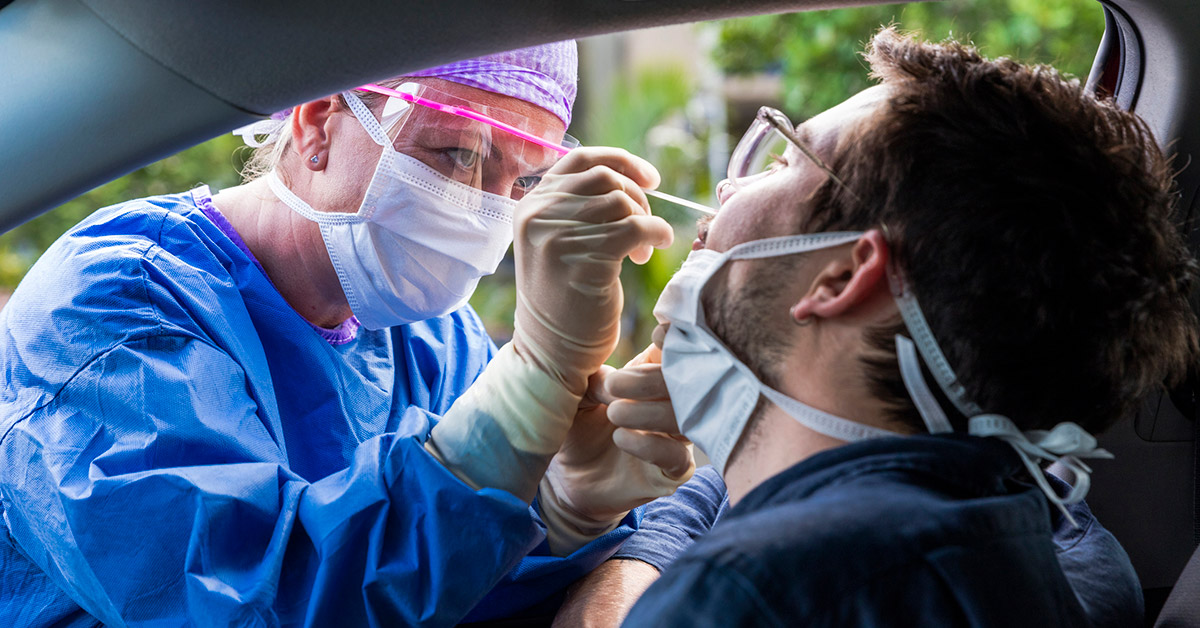A study to screen nearly 500 symptom-free health care workers to see if any were actively infected with COVID-19’s SARS-CoV-2 virus found all participants to be infection-free. The results suggest that the prevalence of active infection at any single point in time is potentially low among health care workers without symptoms.
The main study findings have been posted to MedRxiv while they await publication.

“While these are encouraging results, they do not negate the current knowledge that health care workers remain a high risk group given their inability to socially distance due to their service on the front-lines and frequent contact with potentially infected patients,” says study lead researcher and Associate Professor Ryan Demmer. “To date, 6,854 health care workers have been infected in Minnesota, which is 10% of the state’s total.”
“Due to the increased risk in health care settings, we wanted to look closer at healthcare workers to assess the absolute risk at a snapshot in time. We were particularly interested in symptom-free individuals given their known potential for transmitting the infection” says Demmer. “The results modestly assuage — but do not eliminate — the concern we had for the safety of health care workers. They are also encouraging for patients who need to see their health care provider but are concerned about the risk of infection associated with the visit.”
Demmer’s research team included Associate Professor Shalini Kulasingam, Professors Susan Kline and Steve Stovitz, researcher Angela Ulrich, students Talia Wiggen, Ali Strickland and Brianna Naumchik as well as Rob Knight from the University of California – San Diego. The study was funded, in part, by a COVID-19 pilot grant from the Office of the Vice President for Research.
The research team tested for the COVID-19 virus by taking nose samples from healthcare workers of all types from across the Minneapolis-St. Paul, Minnesota area. The samples were taken over an eight-week period with the intent to estimate the prevalence of the infection among healthcare workers and whether the point prevalence (i.e., the proportion of individuals who are positive at a snapshot in time) changed over time during the pandemic. According to Demmer, an original goal of the study was to determine the point prevalence of people with SARS-CoV-2 infection who were free of symptoms so that they could learn more about the onward transmission of illness from asymptomatic or presymptomatic infected individuals. Surprisingly, no infections were ever detected.
Demmer says that the results suggest that the proportion of symptom-free health care workers with an active infection in Minnesota is <1% at any point in time thus far through the pandemic. It is important to note that this result could vary over time and according to the frequency of contact with infected patients. For example, the study did not enroll a meaningful number of individuals in long-term care facilities where infection risk has been notably high.
“If you look at state health department data on who is testing positive, approximately ten percent are health care workers, which is alarming. Although health care workers clearly shoulder a higher burden of infection, this metric could be an overestimate because health care workers are also more likely to be tested,” says Demmer.
The study has some important limitations, such as including participants from ambulatory clinics which experienced reduced patient volume during the study period. Nevertheless, 34% of respondents worked in an emergency department or an intensive care unit. Additionally, this study could not estimate the proportion of health care workers who have been infected cumulatively to date and it is possible that some of the participants had been unknowingly infected and recovered prior to enrolling in the study
To address the limitations going forward, Demmer plans to test the same group of health care workers for SARS-CoV-2 antibodies over the next six months to monitor the cumulative proportion of medical professionals who have been infected.

